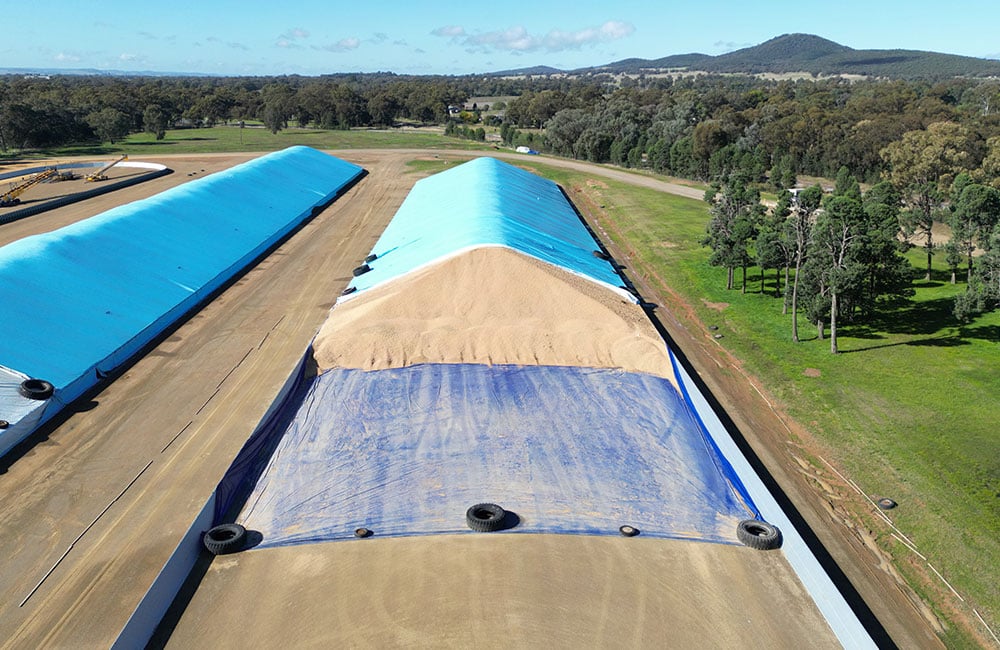
Sewing up grain tarps during harvest is an essential job but can become difficult to manage during this extremely busy time with many competing priorities and staff already stretched thin on tasks. One grain handler based just south of the Murray River in North Victoria was experiencing such issues with over 100,000T of grain storage to oversee. Jay, the site manager at the property found Polytex’s battery sewing machine offered an ideal solution to get grain tarps sewn quickly and efficiently during harvest.
For Jay, labour was at a premium and he was having trouble finding experienced staff to manage the grain tarps. He had a tarp crew of three, with a generator on the back of a ute working on various bunkers where sewing was needed. Two of the crew were needed for safety to ensure the lead was up over the bunker and free for the sewing apparatus.
The Battery Sewing Machine from Polytex transformed this process. With no leads involved and no fuel required, there was no need for a generator and trip hazards were alleviated. The machine was lightweight, easy-to-use and had interchangeable batteries for extra power. This meant that only one operator was now required to sew up the grain tarps, freeing up the 2 additional resources to work on other key harvesting duties.
Polytex provided needles and threads to accompany the Sewing Machine and Glomastic for sealing the seams. They also supplied Endurabond Tape for fixing small rips and tears. Fumigation zips were welded into the tarp which ensured easy access to grain sampling and fumigators. For further efficiency, Jay used a Polytex bunker broom to help keep the ground sheet clean and to enhance onsite hygiene. The broom attached neatly to a bobcat, forklift or tractor and reduced the time needed for cleaning.
Jay was thrilled with the impact that the Polytex Battery Sewing Machine, Glomastic, Endurabond and Bunker broom had on the site operations during harvest time. Together they provided great time savers, offered quality storage, improved efficiency, and reduced hiring difficulties during this key season.